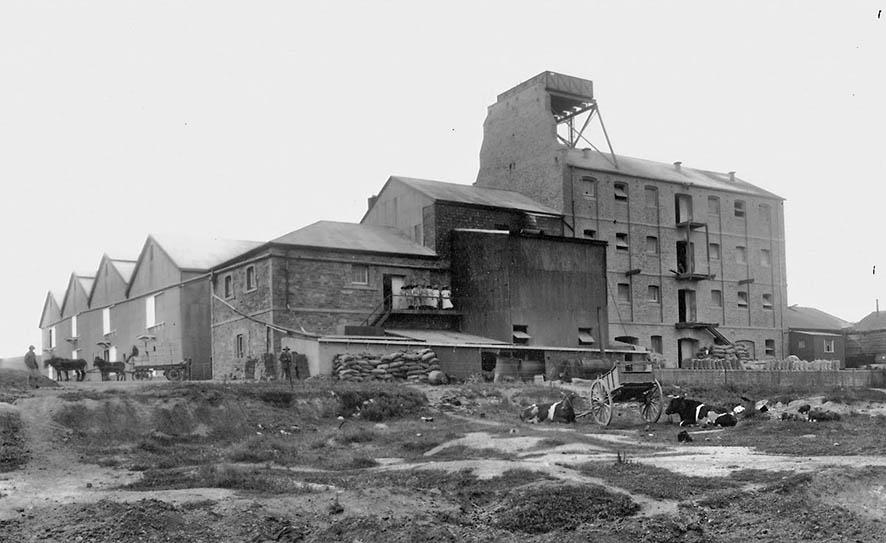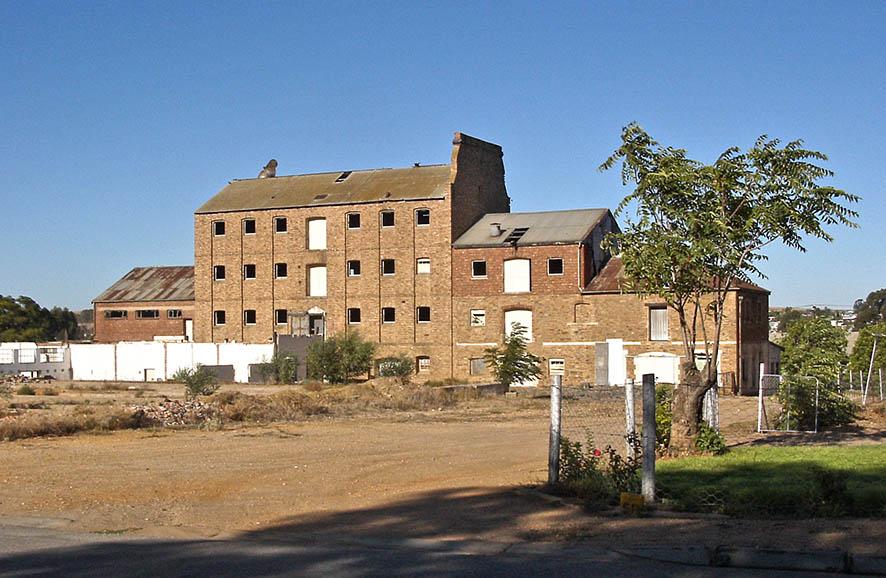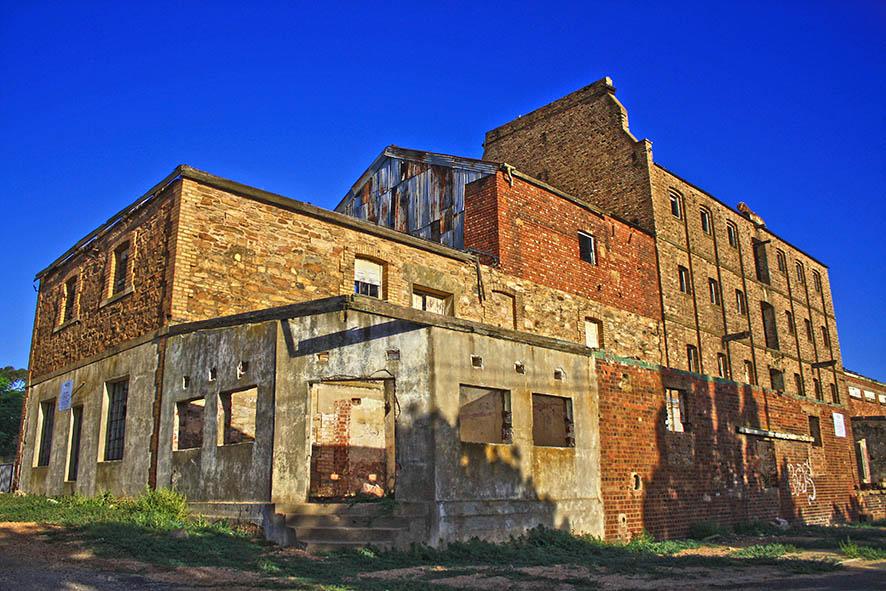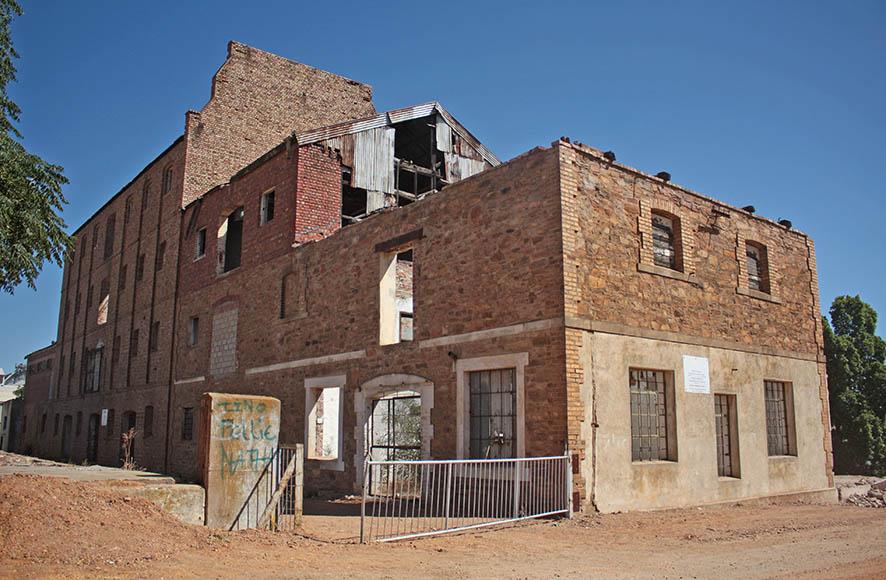
Disclaimer: Any views expressed by individuals and organisations are their own and do not in any way represent the views of The Heritage Portal. If you find any mistakes or historical inaccuracies, please contact the editor.
In 2016 Tiger Brands celebrates 120 years of existence. The origins of the company are revealed in a highly significant yet neglected brick and stone complex of multi-storey industrial buildings in Moorreesburg in the Western Cape. In August 1998, Laura Robinson, then working for the old National Monuments Council (NMC), wrote the following:
The National Monuments Council is most interested in the building complex as a whole, both the corrugated iron structure, as well as the permanent brick and stone building, and the chimney across the road. In our opinion the complex is as significant as some of the (few) remaining industrial buildings in Cape Town, and I refer particularly to the Old Castle Brewery in Woodstock and the historical buildings in the Breweries Complex in Newlands, which has been successfully restored by the well know architect, G Fagan, and is now a historical monument. Buildings of this type are becoming increasingly rare in this country and a fine example such as this is worthy of preservation. In many European countries as well as the United Kingdom and America, industrial buildings are highly valued and are re-used in a number of creative and exciting ways; these have proved to be an extremely valuable asset to local tourism.
The NMC would certainly not be prepared to consider approving the demolition of the Old Tiger Oats buildings in Moorreesburg and would suggest that the potential for creative re-use and restoration/renovation of the complex be explored.
Unfortunately, since that period, the complex has gone through a marked deterioration, with elements having been sold off at one stage, illegally in my opinion, whilst others have just disappeared, assumed stolen. The structures are now approaching a state which might necessitate demolition. According to the National Heritage Resources Act, though, demolition without a permit from the relevant heritage authority is of course an offence.
A recent photograph of the Tiger Oats Complex (Chris Murphy)
In a request to Heritage Western Cape and SAHRA by Swartland Heritage Foundation, in 2004, to take action, it was stated that a situation of wilful neglect existed and that steps should be taken to enforce the owner/s to rectify the situation. The Swartland is often perceived as an area of no particular heritage importance architecturally, and situations like this go some way to reinforcing this view. If the owner/s were forced to comply with the Act, it might serve as an example to others who do not want to sustain historic buildings.
Another shot of the Tiger Oats Complex (Chris Murphy)
In a Record of Decision from Heritage Western Cape dated 29 June 2006 it was stated that the Built Environment and Landscape Committee (BELCOM) decided not to approve any demolition of the building and that it should be proposed for provincial declaration and protection. No further action has been taken.
On a subsequent visit to the complex I found someone on site removing material. After contacting the police he was removed. In a letter to the police I requested that an eye be kept on the premises. The Commissioner of Police in Moorreesburg at the time replied that in his opinion ,’. . . the community will be better off if it is demolished’ quoting a recent murder on site and that they could not act as a ‘security firm’.
Wilful neglect of a piece of South Africa's Industrial Heritage (Chris Murphy)
From research it is apparent that the Tiger Oats complex was the origins of what is now Tiger Brands (the buildings have even been featured on their website), and it was of such substance in the town that the local rugby team was essentially drawn from the staff.
Originally known as Tiger Oats, Tiger Brand's first product was a breakfast oatmeal brand called Jungle Oats. A product that is still produced by Tiger Brands. The product was first conceived by a Mr Frankel towards the end of the 19th century and was finally launched in 1925. Tiger Oat's first Mill was opened in Moorreesburg, Western Cape. A second mill was opened in Maitland, Cape Town when demand outgrew the Moorreesburg's mill's capacity in 1930. The Moorreesburg mill was abandoned in about 1987. (source Wikipedia).
The Tiger Oats complex is a sad example of how buildings which could and should have a life, are neglected until such time they become unusable. Similar structures internationally (waterfront complexes in New York and London, for example) have become sought after residential units. The Old Castle Brewery in Cape Town, to which it was compared by the NMC, is evidence of a creative solution.
Stating the obvious, structures should always have function. A personal suggestion is that the complex could be appealing to the film industry. To fulfil a developing need in the Cape, here is a large, now (not intentionally) open plan building on a fairly large erf, which could be adapted for such use. One would expect overheads to be far lower than in or near the city.
Chris Murphy - orchard@wcaccess.co.za - www.heritagechroniclesa.org
Main Image - View of the Tiger Oats complex, Ravenscroft Collection, Cape Archives
Comments will load below. If for any reason none appear click here for some troubleshooting tips. If you would like to post a comment and need instructions click here.



